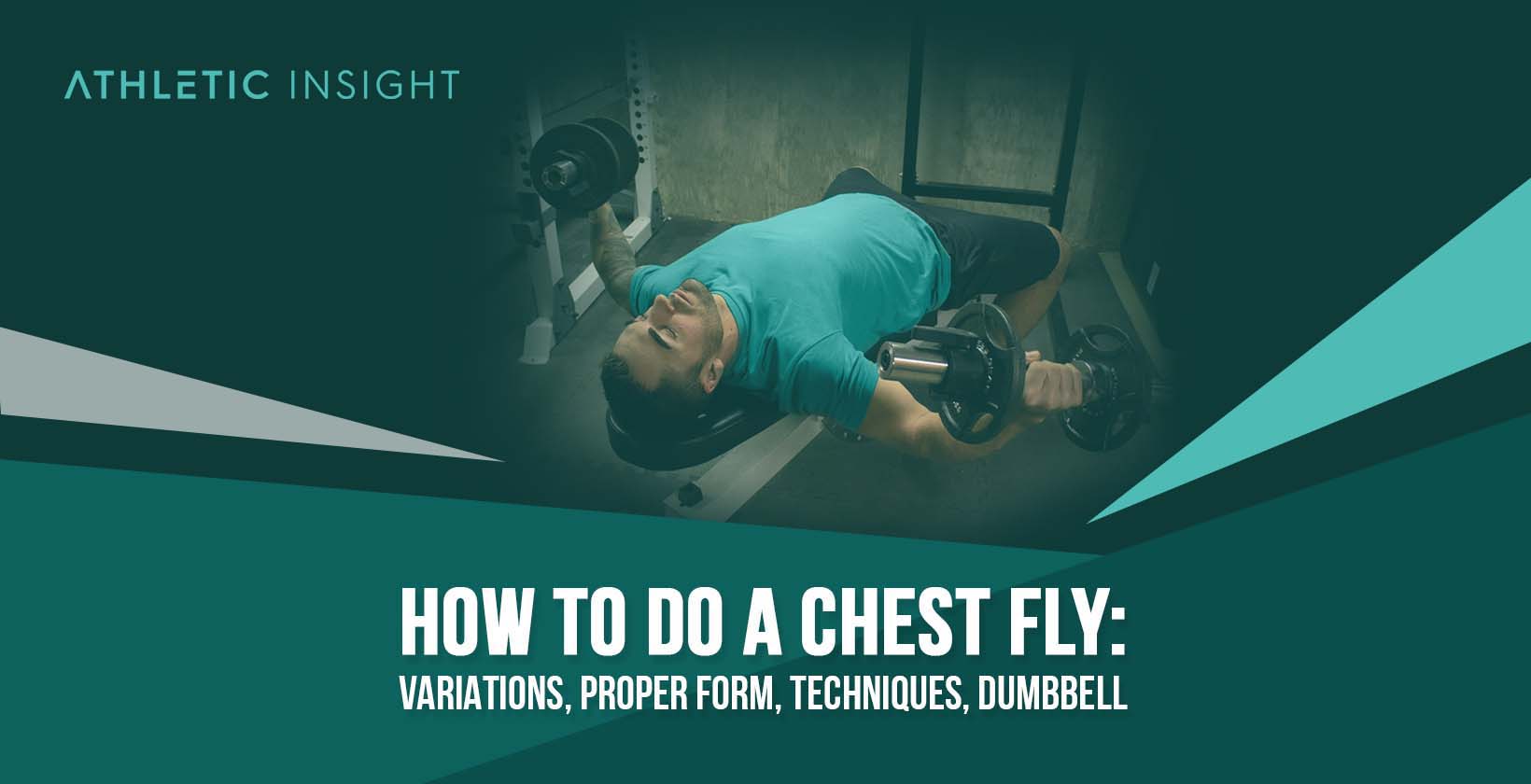The chest fly is a compound exercise that targets the chest and shoulder muscles while helping to increase overall strength. Although the primary form of the chest fly is lying face-up on a bench, there are unlimited variations to work different muscle groups.
The chest fly has many benefits beyond chest and shoulder muscles. There is evidence that exercising often increases testosterone production and improves mood. Many consider this exercise an essential part of a regular workout. Anyone exercising can perform the Chest Fly at home or the gym.
Whether the chest fly is done with a barbell, dumbbells, or other weights, proper form is essential. Otherwise, muscle straining, pulling, and other injuries can occur. Common mistakes include improper form and too much weight at first.
This article will define the various types of chest fly, the weights and equipment required, and how to perform a chest fly exercise properly. There is a list of further facts and commonly asked questions about the chest fly at the end.
How To Perform Chest Fly With Proper Form?
To properly perform a regular chest fly, you need to lie down on a bench. You can lay down on the ground if you do not have a bench. However, using an exercise bench can increase the effectiveness of the chest exercise. Here are the steps for completing a chest fly with the proper form.

- Lie on your back, bend your knees and keep your feet flat on the floor
- Put the dumbbells overhead
- Spread your arms broadly out to the side and bend your elbows
- Lower the dumbbells until your arms are parallel with your chest
- Squeeze your chest as you bring the weights back together
- Repeat until you’ve reached the desired number or have exhausted the muscle group
It’s essential to begin with low weights and just a few repetitions. Once you have built up strength, add weight and increase the number of repetitions. Muscle will build more quickly, and soon, you will see results.
1. Lie on your back, bend your knees and keep your feet flat on the floor
Lie on your back, bend your knees and keep your feet flat on the floor. This is the starting position for the dumbbell chest fly. It should be noted that you can do these on the ground or on a bench. You can also do these on an incline or a decline depending on the area of the pectoral muscle you would like to target.
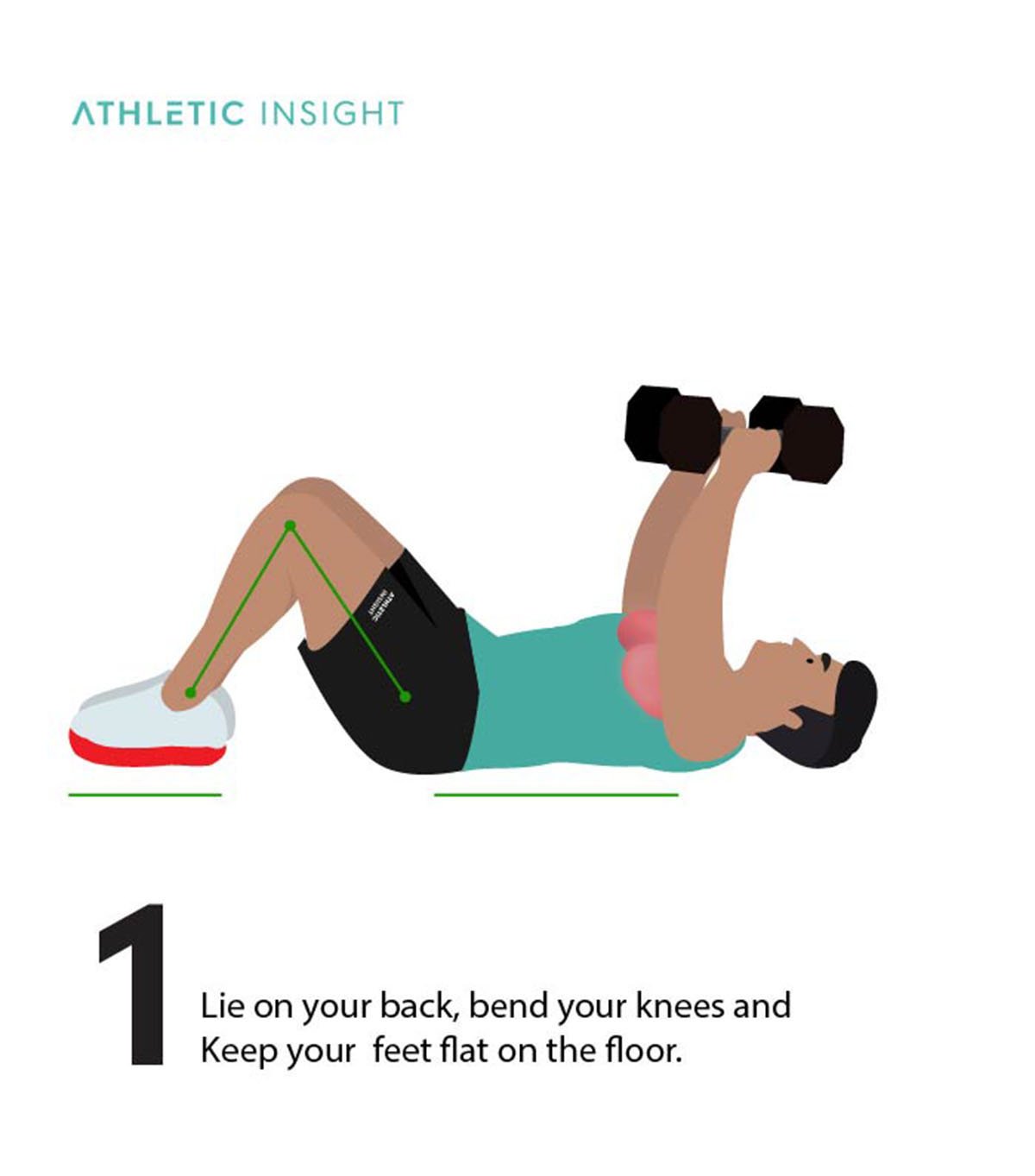
2. Put the dumbbells overhead
Put the dumbbells overhead carefully without straining yourself. It is best if you can have a partner hand you the weights so that your muscles do not get tired before you have begun the exercise. It is also recommended to have a spotter to help you complete any reps you are struggling with and so that they can take the dumbbells so that they do not fall on you.
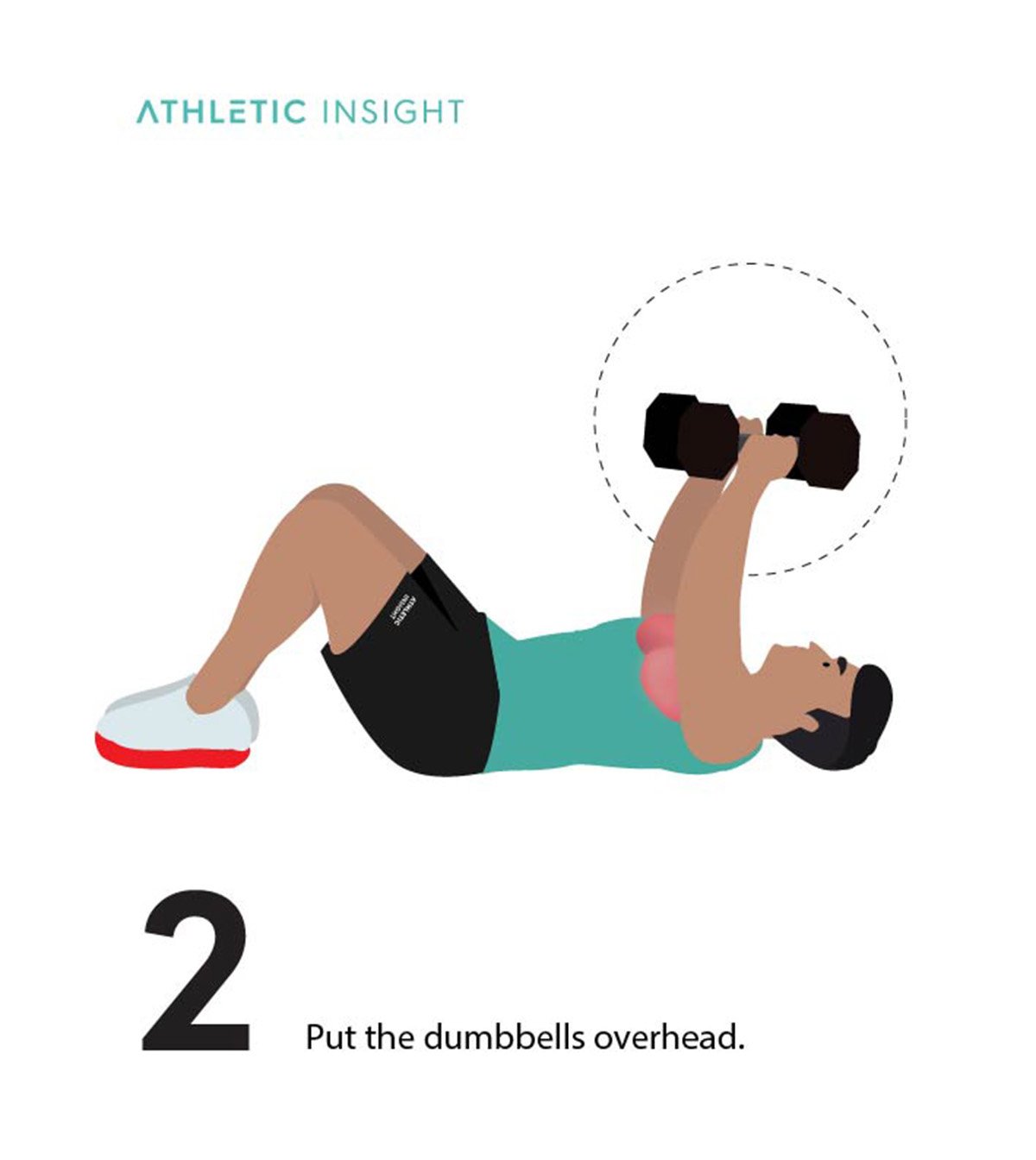
3. Spread your arms broadly out to the side and bend your elbows
Spread your arms broadly out to the side and bend your elbows. Depending on your flexibility and the weight amount, you may feel a lot of strain on your shoulder and elbows. If this is the case, try using lighter weights.
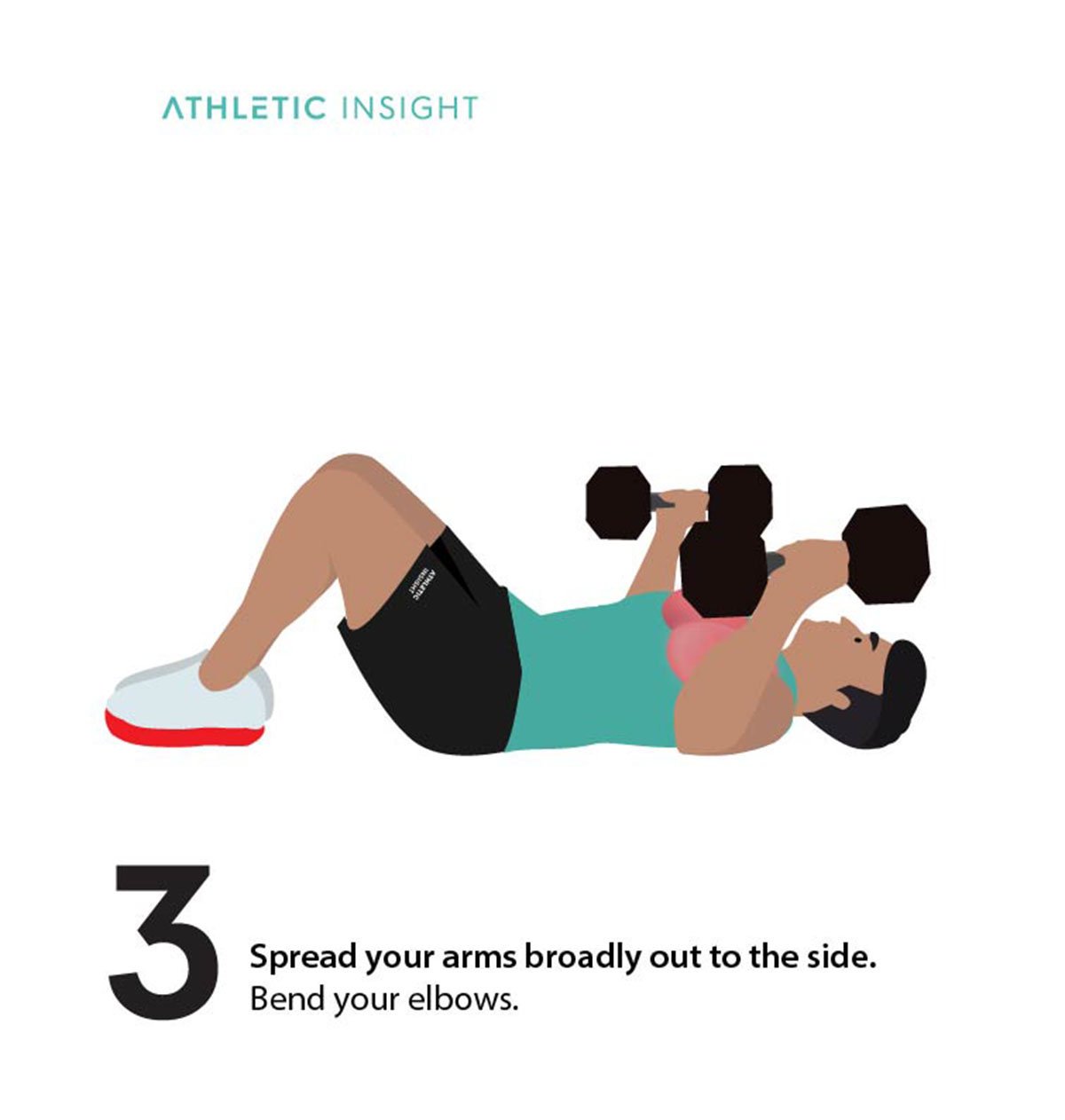
4. Lower the dumbbells until your arms are parallel with the chest
Lower the dumbbells until your arms are parallel with the chest. If you are unable to hold the weight comfortably at this position, you are using too much weight. Also, you do not want to go past your chest as it may cause an injury. While doing these on the floor will help prevent this, those that opt for a bench will need to be aware of their depth.
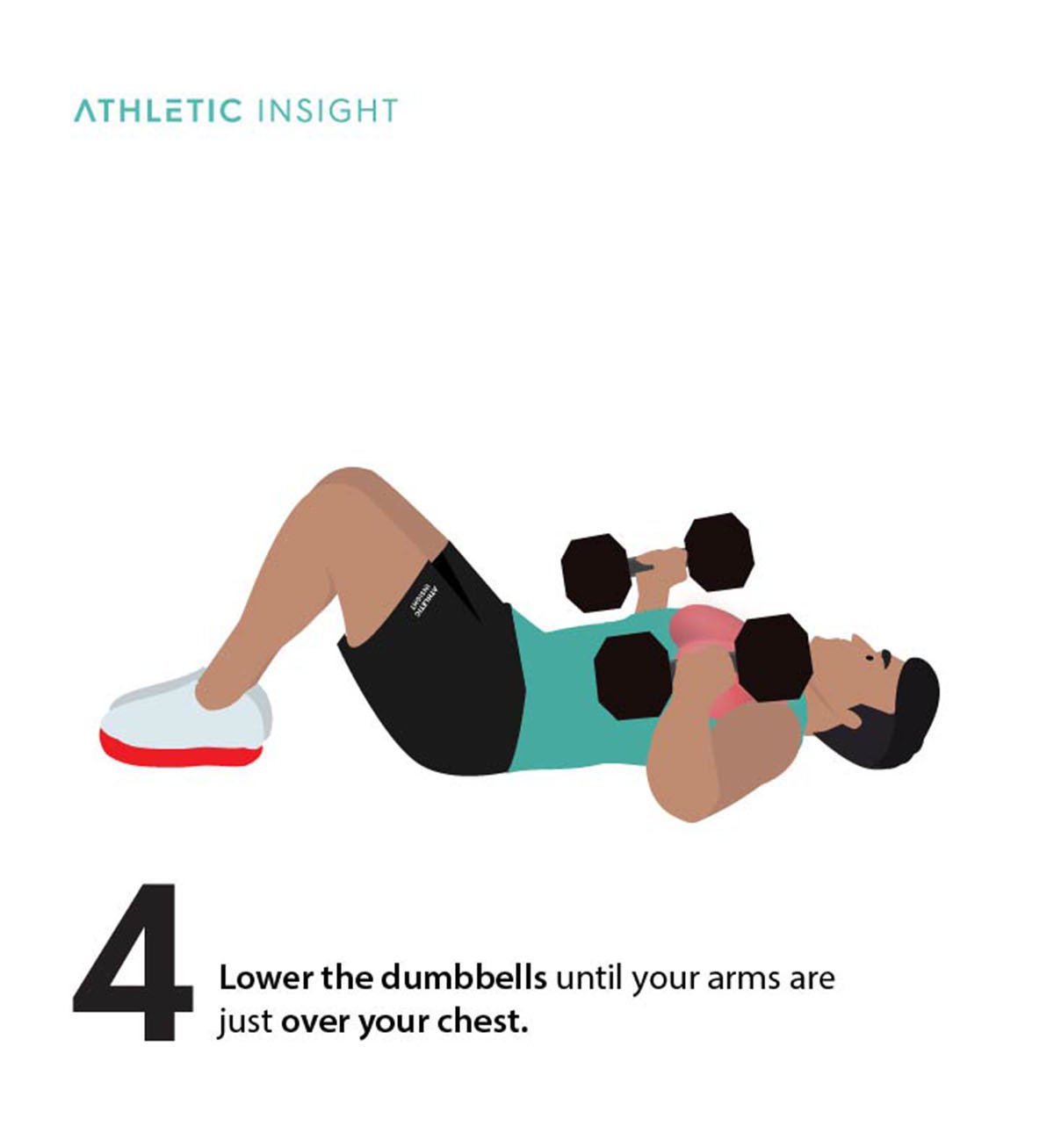
5. Squeeze your chest as you bring the weights back together
Squeeze your chest as you bring the weights back together, this counts as one repetition. While you contract the pectorals throughout the entire exercise, consciously contracting (squeezing) the pectoral muscles will help them grow.
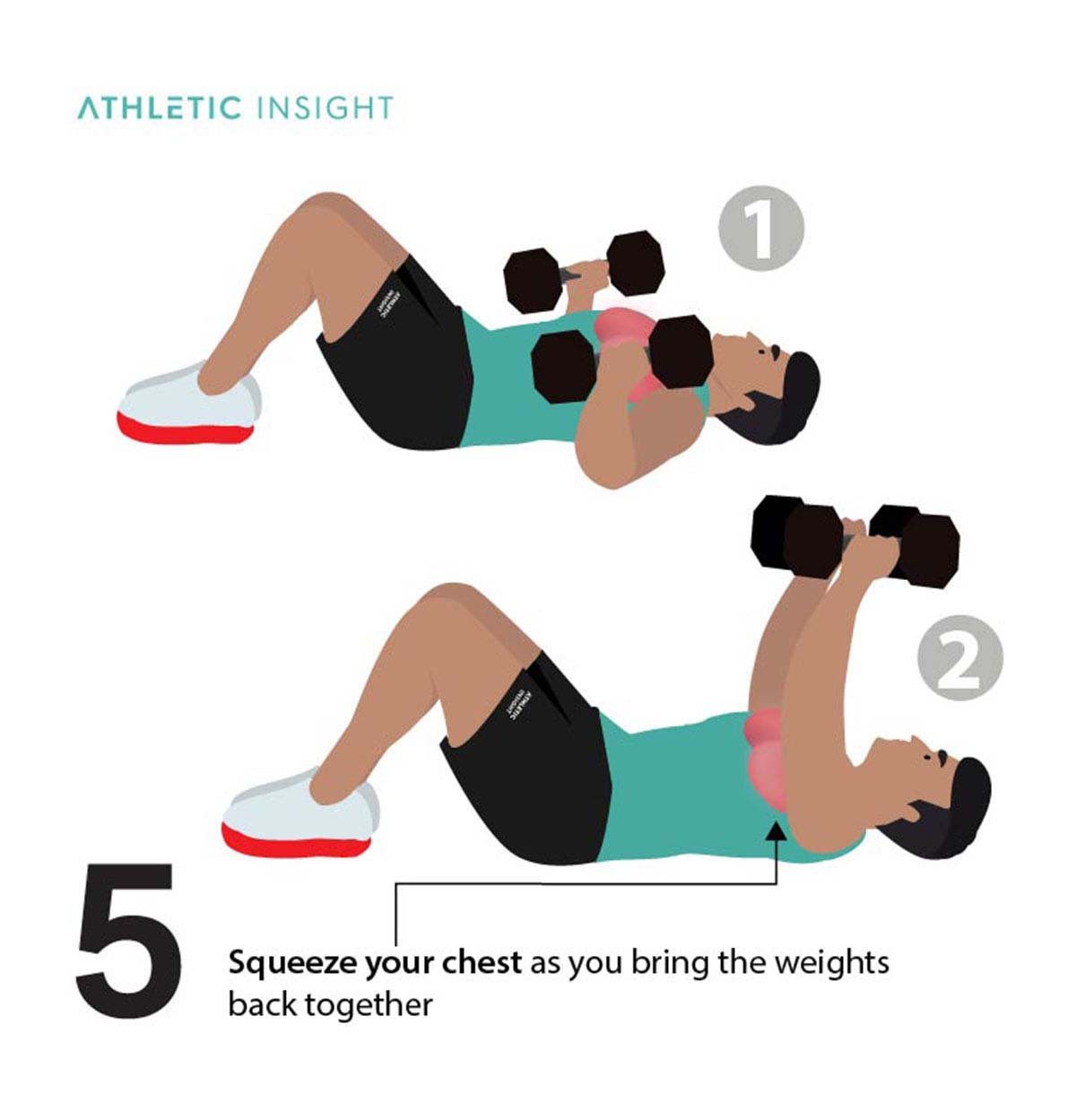
6. Repeat until you’ve reached the desired number or have exhausted the muscle group
Repeat these steps until you’ve reached the desired number of repetitions or have exhausted the muscle group. If you are exhausting the muscles before completing your desired rep range, then using less weight is recommended. Also, if you are completing the repetitions with ease, try adding on more weight or doing more reps.
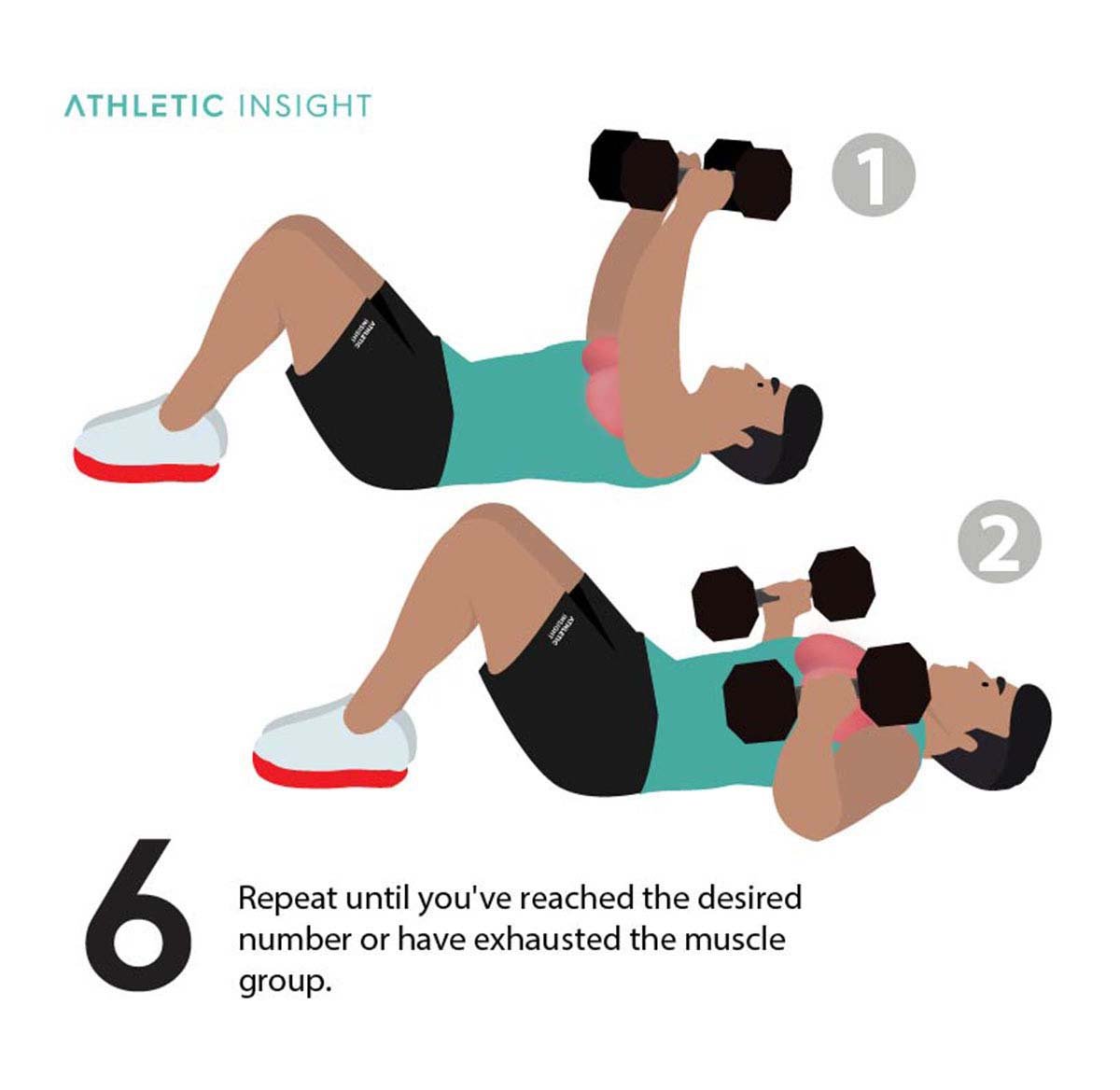
What are the benefits of Chest Fly?
The chest fly is a frequently used exercise because it increases muscle growth quickly. However, there are many more benefits to the chest fly than just muscle mass. Here are some of the other advantages of performing the chest fly regularly.
- Works as a chest opener
- Lessens upper back pain
- Reduces tightness in the upper body
- Increases range of motion
- Improves posture
- Gains strength in the shoulder
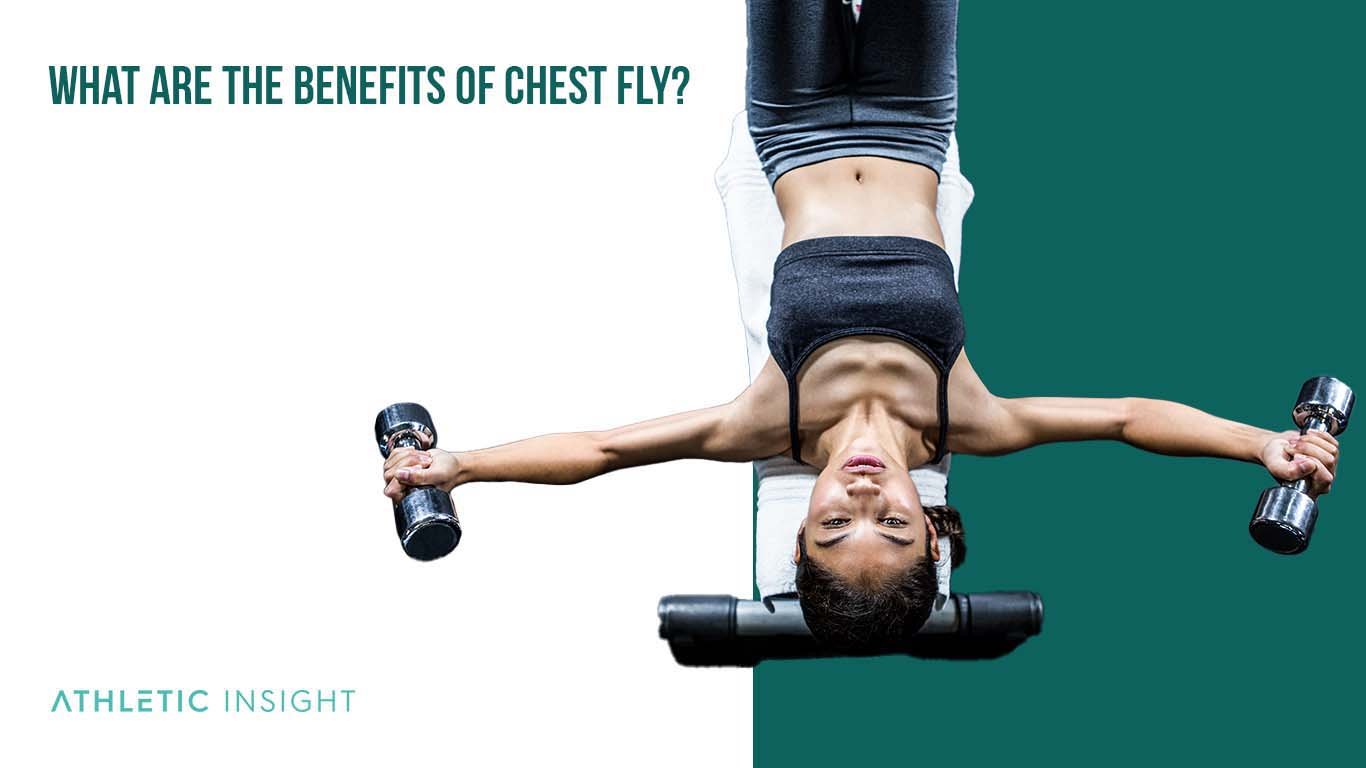
Each of these benefits works outside of the gym as well. The chest fly is a superb exercise for anyone who wants the benefits of better posture, an open chest, and a stronger spine. As with many exercises, the benefits of doing the chest fly go beyond muscle growth.
What are the mistakes for the Chest Fly Exercise?
For a good chest fly form, you need to follow the steps meticulously. Do not overstrain your muscle! The common mistakes in a chest fly are using too heavy of weights at first or doing too many repetitions.
However, you can easily avoid these mistakes for optimal chest fly form. Only do what you can until you are stronger.
To avoid straining or pulling muscles, never bring your arms below the level of your chest. Unless you are performing a reverse fly (laying on your stomach), this could pull your lateral muscles. It is, therefore, vital to do any arm exercises properly to prevent injury.
How to Determine Proper Weight for the Chest Fly?
The proper weight for a chest fly depends on your muscle strength and experience in training your upper body. If you are a true beginner, start with a three to five-pound dumbbell in each hand. Starting with light weights will prevent injury and help grow muscle and strength.
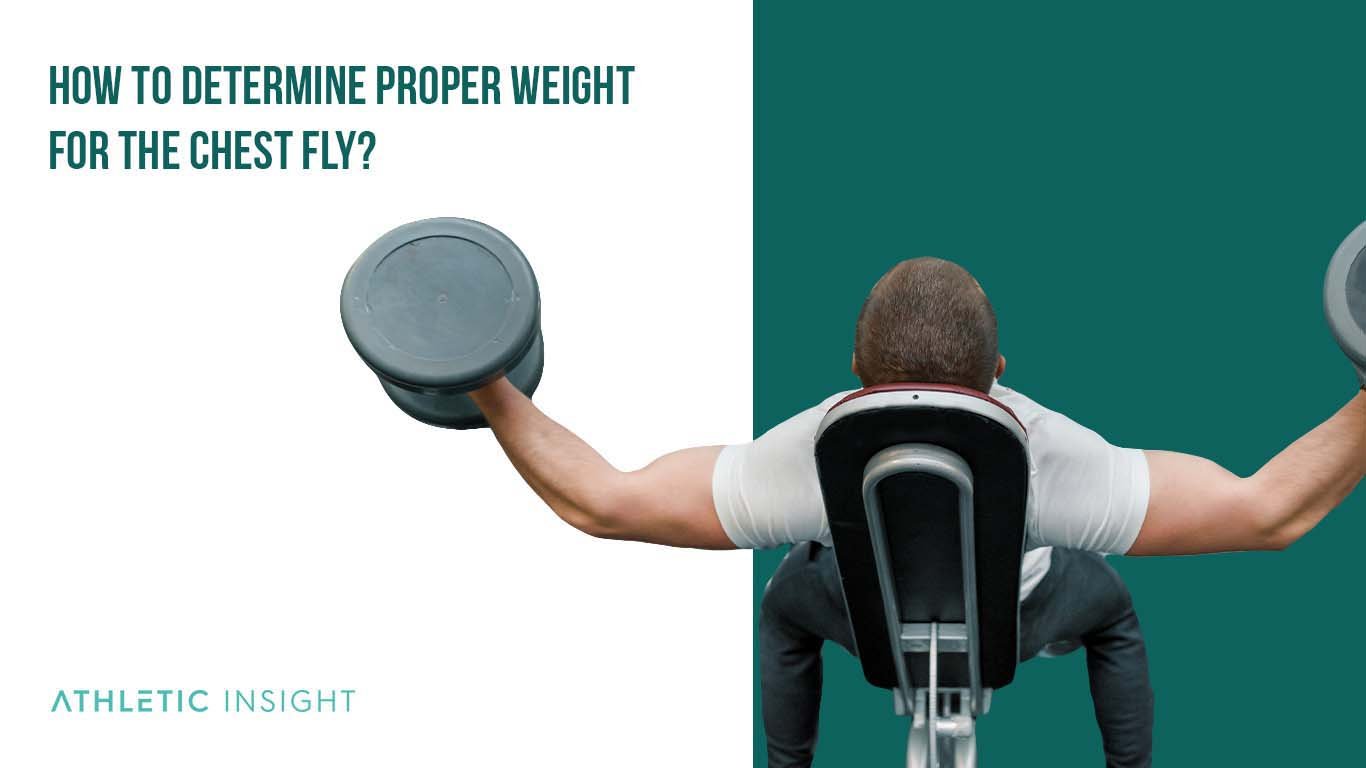
Those who are a little more experienced in upper body exercises and after exercising for a time with smaller weights can upgrade to ten-pounders. From there, increasing weights and repetitions is a matter of exercise frequency and how quickly you are gaining muscle.
Which Muscles are Involved While performing Chest Fly?
The chest fly works most of the back muscles, chest, and upper shoulders. While it mostly works on the upper body, some abdominal and core muscles are active, too. These muscles groups include:
- Deltoid muscles
- Trapezoid muscles
- Pectoral muscles
- Shoulder muscles
- Tricep muscles
- Core muscles
What are the Phases of the Chest Fly?
There are two phases of the chest fly: the eccentric and concentric phases. These phases are determined by the way the muscles move when completing the phase. Both the concentric and eccentric phase increases muscle mass.
The first phase of a chest fly is the eccentric phase. It is when your body is pushing the weights up into the air, using the force to build muscle. The muscle is shortening and contracting to push the dumbbell into the air.
On the way back down, you experience the concentric phase. Your muscles become longer as they resist the pull of gravity and the weight of the dumbbell. It takes willpower to not let the weight drop, which increases the muscle-building power of the concentric phase.
What are the Chest Fly Variations?
While the standard chest fly is easy enough to learn, there are many variations of the chest fly. Each of these variations has a slightly different position and works different subgroups of muscles within the chest, shoulders, and back. However, they all focus on the upper body. Here are some common fly variations.
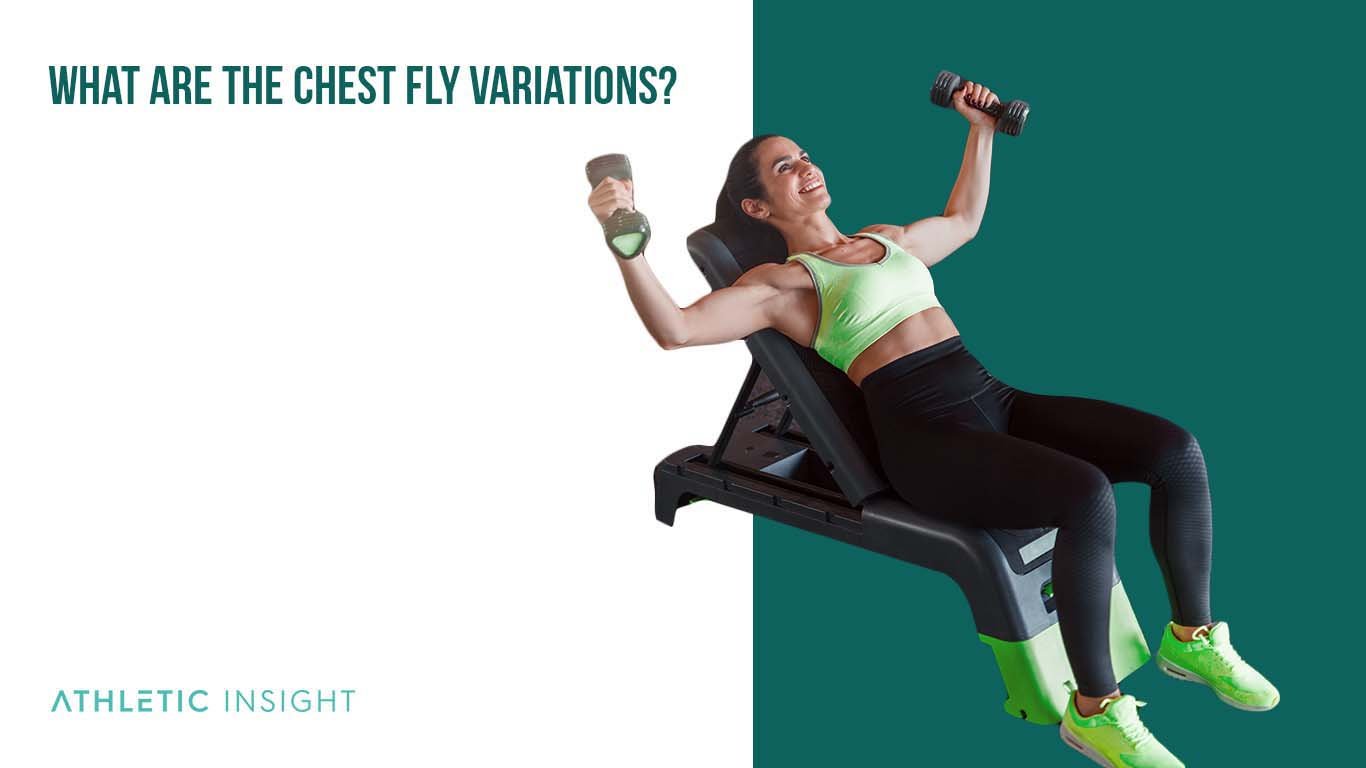
- Seated Dumbbell Bent Over Reverse Fly
- Dumbbell Reverse Fly
- Machine Rear Delt Reverse fly
- Seated Machine Chest Fly
- Alternate Dumbbell Reverse Fly On Incline Bench
- Bent Over Dumbbell Fly
- Dumbbell fly On Exercise Ball
- Seated Dumbbell Bent Over Reverse Fly
- Dumbbell Reverse Fly
- Lever Pec Deck Fly
- Standing Cable Fly
- Lever Seated Iron Cross Fly
- Lying Supine Cable Reverse Fly
- Lever Reverse Fly
- One Arm Dumbbell Reverse Fly On Incline Bench
- Seated One Arm Bent Over Dumbbell Reverse Fly
- Dumbbell Rear Delt Fly on Exercise Ball
- Standing Cable Fly
- Resistance Band Back Fly
- Standing Back Fly With Band
- One Arm Cable Fly On Exercise Ball
- Cable Fly On Exercise Ball
- 23. Swiss Ball Dumbbell Fly
- Seated Cable Rear Delt Reverse
- Flat Bench Cable Fly
- Seated Machine Chest Fly
- Machine Rear Delt Reverse Fly
- Inverted Fly
What is the Necessary Equipment for Chest Fly?
The only equipment necessary for the chest fly is a set of dumbbells and a workout bench. You can use an entire set of weights if you want to gradually increase your resistance. The bench isn’t entirely needed.
If you want to, you could choose to lie on the ground and do a chest fly the same way. You can perform seated or standing chest flies, but you need to be especially careful with your shoulder and elbow joints if that is the case.
What are Chest Fly Related Facts?
Chest flies have been a part of exercise routines for hundreds of years. Bodybuilders use this exercise extensively. There are many facts about chest flies, but here are some of the most commonly asked questions.
Does Chest Fly Affect the Hormones?
Like all exercising, the chest fly has a two-fold increase in hormonal activity. Exercising increases the buildup of testosterone, which helps build muscle and increases energy. In addition, exercise increases serotonin and dopamine, the hormones that increase happiness and good mood.
Does Chest Fly Increase Testosterone?
We know testosterone as the male sex hormone responsible for energy, muscle building, and an increase in determination. However, people of all genders have testosterone, and it still builds muscle in men and women.
Chest Flys increase testosterone production, especially if the athlete takes a protein shake before exercising. Stretching before and after any exercise will also increase muscle build-up because it will move the lactic acid throughout your body and help the exercise digest so to speak.
Does Performing the Chest Fly Affect the Mood?
Doing chest flies, as with any physical exercise, the amount of serotonin and dopamine in the brain increases. These hormones are responsible for good moods and have can decrease depression and anxiety.
Is the Chest Fly Exercise Practiced Within Crossfit?
Chest flies are a massive part of gym exercise programs and some Crossfit athletes practiced it as well. While they might not be a part of the Crossfit exercises that focus on cardio or legs, any upper body days want to have some variation of the chest fly.
Is Chest Fly a Military Movement?
Yes, the military uses many variations of the chest fly in their training programs. The Chest Fly was a military movement originally, as well as performing the Chest Fly in the standing and benchless positions. Although the various forms of the chest fly aren’t all military movements, the basic chest fly is.
Is Chest Fly Dangerous?
Performing the chest fly is only dangerous if you do it incorrectly. Using too much weight without training could end in an injury, such as a strained muscle or pulled ligament. Without the proper form, the chest fly could be dangerous. Otherwise, it is not, but always consult a medical professional before starting a new exercise regime.
Is the Chest Fly Essential?
The chest fly is an essential part for any athlete trying to gain muscle in the chest, back, and shoulder. It makes up a part of a decent arms workout. The chest fly is an essential workout because it works the upper body, the core, and the arms simultaneously.
Is the Chest Fly a Compound Exercise?
Yes, the Chest Fly is a compound exercise because it trains multiple muscle groups at the same time. The Chest Fly works the back and front of the chest and shoulders, creating a complete workout of the chest and back.

